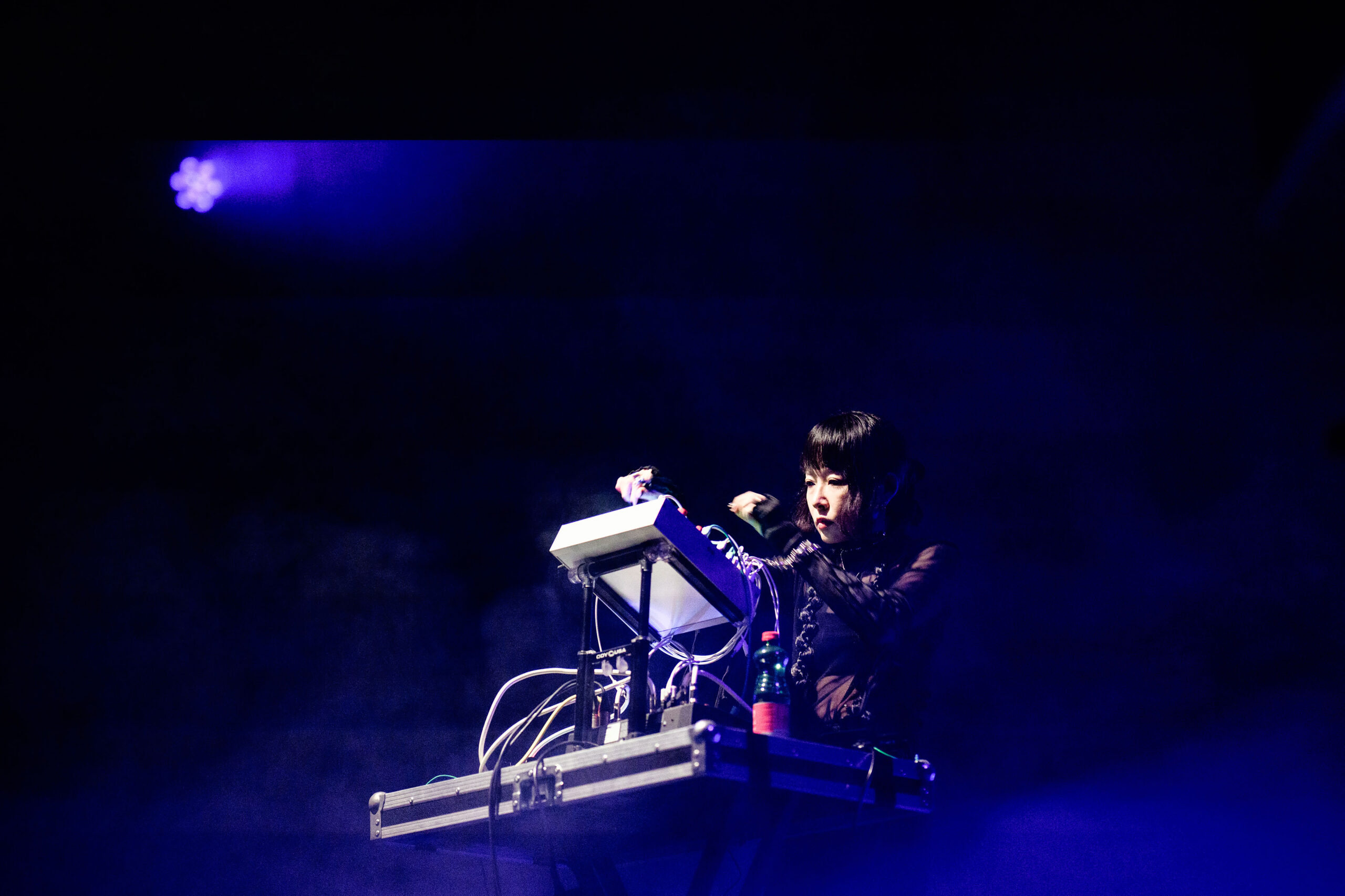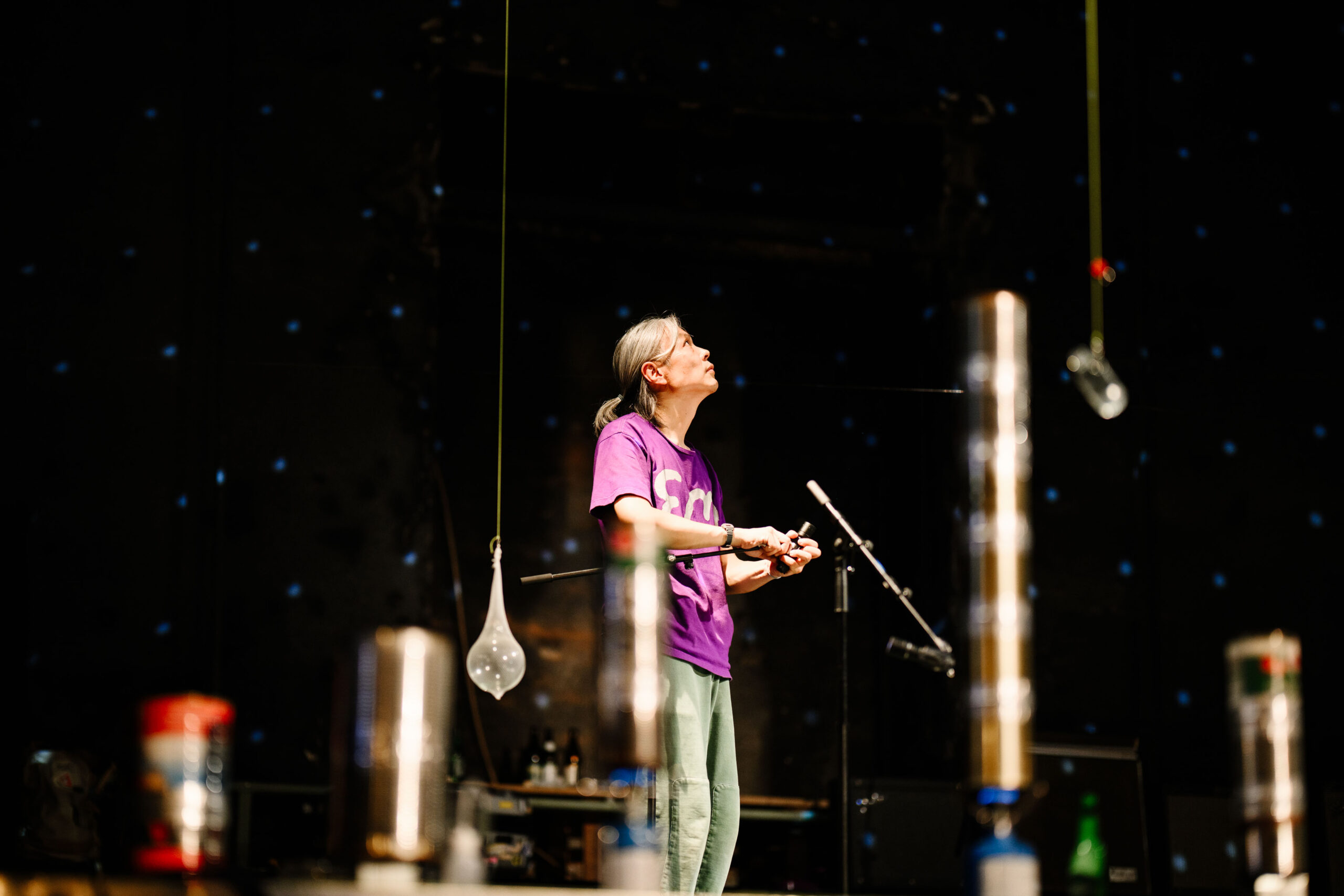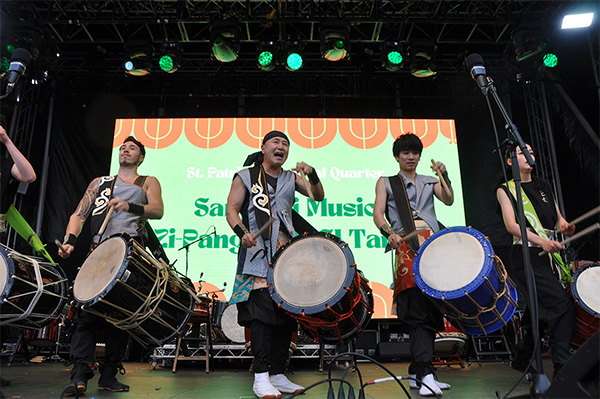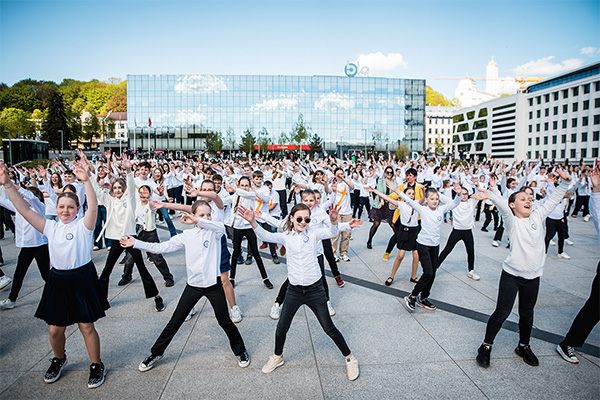Column
ColumnReflections on past and future prospects considering artistic exchange
The New Salt Festival 2024, which showcased over 50 artists, was a pioneering event that merged electronic music, contemporary composition, and multimedia art. Among the many highlights of this festival, the contributions of Japanese artists Yuko Araki and Tetsuya Umeda stood out, adding unique layers to the artistic landscape and offering a fresh perspective that enriched the event. Their involvement not only shaped the artistic narrative of the festival but also left a lasting impact on both the audience and fellow artists.
Yuko Araki, a musician with a background in noise and experimental music, presented a performance that transcended conventional auditory experiences. Her ability to sculpt complex layers of sound using electronic equipment was mesmerizing. Her performance stood out for its intensity, creating an immersive atmosphere where the boundary between music and noise dissolved. The audience responded with a mix of awe and reflection, as Araki’s work invited them to reconsider their relationship with sound, silence, and space.

Tetsuya Umeda’s approach to sound installations and live performances added a fresh layer of unpredictability and spontaneity to the festival. His work involved site-specific interventions that utilized found objects, repurposed materials, and the natural environment. His work, which included elements such as fire, water and small explosions, blurred the boundaries between art, physics and the environment. It evoked a sense of playfulness, but also a deeper reflection on how we interact with the physical world around us.
What struck me most about the contributions of Araki and Umeda was how they shared an ability to challenge conventional artistic experiences. Both artists, in their own ways, deconstructed the boundaries between performer and audience, encouraging active listening and deeper reflection on the relationship between sound, space, and the senses.
The inclusion of these Japanese artists played a crucial role in shaping the festival’s tone and broadening its creative scope. Araki’s performances pushed the audience to question traditional sound structures, while Umeda’s installations invited them to reconsider how art interacts with the environment. This fusion of different artistic styles deepened the festival’s exploration of contemporary music and multimedia art.
Looking to the future, the collaboration with the Japanese artists, but also the collaboration and artistic exchange with other participants of the festival, has shown the enormous potential for future events or residency programs to promote even more intercultural exchange. I see great potential in expanding these kinds of partnerships, where artists from different countries and disciplines come together to create works that are not only experimental, but also based on collaboration and exchange. This could take the form of artist residencies, where creatives spend time working together and developing their ideas, or through wider participation in local communities.

In addition, the festival’s interdisciplinary approach, which combined music, sound installations and multimedia works, provided fertile ground for artists to break out of their comfort zone and collaborate across genres. The interdisciplinary framework not only encouraged creative freedom but also fostered a deeper sense of artistic community among the participants. This type of environment is particularly exciting for future collaborations – also in other contexts – as it allows for risk-taking and innovative artistic developments. Artists interested in pushing boundaries and experimenting with new forms found a welcome and supportive platform in the New Salt Festival and may find this in follow-up projects.
I would encourage artists who are considering participating in future projects related to or that will arise from the New Salt Festival to embrace the practice of experimentation and collaboration. New Salt was not just a space for performance, but also a meeting place for ideas. The interdisciplinary nature of the festival provided ample opportunity to take creative risks, making it an ideal place for collaboration.
In conclusion the collaboration with Yuko Araki and Tetsuya Umeda at the New Salt Festival 2024 was a defining experience, demonstrating the powerful impact of cross-cultural and interdisciplinary artistic exchanges. Both artists brought fresh, innovative ideas to the festival, challenging the audience and fellow artists to reconsider the boundaries of sound and art.
The potential for future collaborations in different contexts in the context of events related to New Salt is enormous, and I am excited to see how further endeavors will develop as a result of the exchanges at this unique festival.








